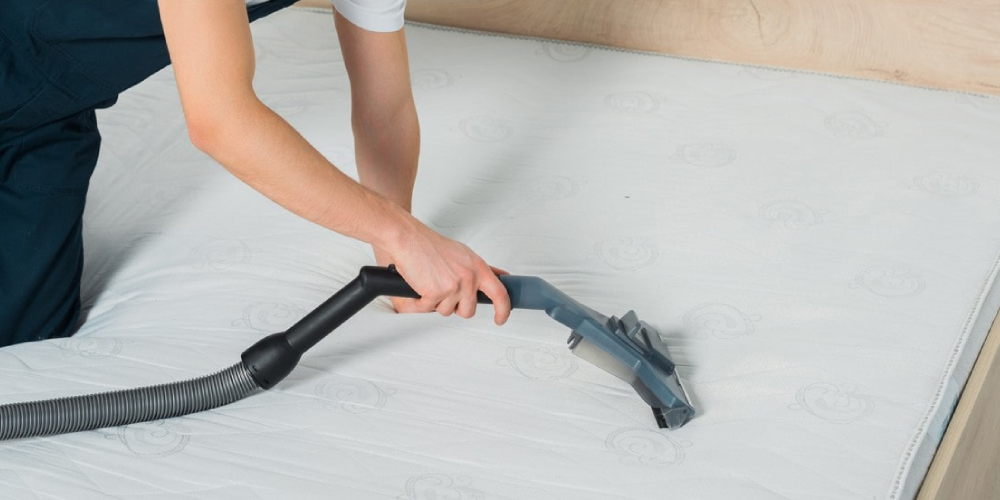A clean sleep environment is essential not only for achieving restful sleep but also for overall health and well‐being. Selecting the appropriate mattress involves much more than comfort alone; it directly influences sleep hygiene, allergen control, and even respiratory health. In this article, the impact of mattress choice on sleep hygiene is explored in depth. The discussion includes how different materials, firmness, and design features affect allergen and dust mite accumulation, as well as the importance of cleaning and maintenance practices. Customers seeking professionalmattress cleaningservices will find valuable insights into choosing mattresses that suit their individual health needs and lifestyles. As sustainable products and hypoallergenic options become increasingly popular, understanding mattress selection can lead to improved indoor air quality and a reduced risk of irritation or asthma. The article also outlines best practices for creating and maintaining a clean sleep environment—from regular maintenance techniques and proper cleaning schedules to environmental controls in the bedroom. With detailed analysis, practical examples, and actionable cleaning tips, this guide serves as a valuable resource for consumers looking to optimize their sleeping conditions while preserving mattress longevity.
Transitioning now to a discussion on how mattress choice can impact sleep hygiene, each aspect—materials, design, and maintenance—will be evaluated with a focus on how professional cleaning services further enhance these benefits.
Understand the Impact of Mattress Choice on Sleep Hygiene
Choosing the right mattress is critical for establishing a clean, healthy sleep environment. The impact begins with the materials used in construction. Many modern mattresses incorporate organic compounds, hybrid latex, and natural fibers such as wool and cotton to create a breathable surface that minimizes allergen buildup. For example, organic latex mattresses, certified by organizations like the Forest Stewardship Council, use raw materials that are chemical-free and less prone to dust mites and molds, reducing irritation risk.
Identify Materials That Promote a Clean Sleeping Environment
Materials like natural latex, organic cotton, and wool naturally deter the growth of dust mites and mold. Natural latex resists bacterial buildup because of its open-cell structure, which boosts airflow and reduces moisture retention. Organic cotton and wool add a plush feel while offering anti-allergenic benefits, in contrast to synthetic polyurethane foam that may trap heat and moisture. Studies have shown that mattresses made with organic materials can reduce allergen presence significantly. Hybrid mattresses that blend natural and synthetic elements can be designed to optimize both comfort and hygiene.
Recognize How Mattress Types Affect Allergens and Dust Mites
Different mattress types vary in allergen resistance. Memory foam mattresses provide pressure relief but may retain heat and moisture if not properly ventilated, leading to increased dust mite presence. In contrast, latex mattresses allow for better airflow, reducing moisture and inhibiting allergen growth. Additionally, mattresses with steel coils combined with natural foam layers offer improved air circulation, keeping allergen buildup to a minimum. Manufacturers now employ antimicrobial treatments and zoned support designs to further reduce dust mites and allergens.
Evaluate the Role of Firmness and Support in Sleep Quality
Firmness and support directly influence how a mattress interacts with the body and its cleanliness. A well-supported, firm mattress resists sagging and surface wear, which can trap dust, dirt, and allergens. The interaction between the support core and the comfort layer not only enhances durability but also helps maintain a cleaner surface. Mattresses designed with dual- or multi-layered frameworks often support excellent airflow, promoting a cooler surface and reducing microbial buildup. Research suggests that balanced support improves sleep quality while reducing chronic back and neck pain, indirectly contributing to a hygienic sleep space.
Choose Hypoallergenic Mattresses for a Healthier Sleep Space
Hypoallergenic mattresses are popular among consumers seeking a sleep environment free from irritants. For individuals with asthma, allergies, or skin sensitivities, mattresses made with hypoallergenic materials are vital for a healthier bedroom. These mattresses typically use natural latex, organic cotton, and certified hypoallergenic foam to limit chemical additives and volatile organic compounds (VOCs), thereby maintaining better indoor air quality.
Research Various Hypoallergenic Mattress Materials Available
Mattresses using natural and organic materials tend to offer excellent hypoallergenic properties. Organic latex is made without harmful chemicals and naturally resists dust mites and mold spores. Organic cotton used in covers and padding prevents allergen buildup by promoting breathability. Some modern mattresses combine these materials with antimicrobial treatments to further reduce allergens. Consumer feedback shows that hypoallergenic options can significantly lower the risk of allergic reactions compared to mattresses with mainly synthetic components.
Assess the Benefits of Memory Foam Versus Latex Options
Memory foam mattresses conform well to the body but often include chemical additives that may trigger sensitivities unless CertiPUR-US® certified. Natural latex, on the other hand, naturally resists dust mites and bacteria due to its breathable structure. Studies indicate that natural latex can improve sleep quality in allergy sufferers by reducing chemical exposure and enhancing temperature regulation. While memory foam offers contouring comfort, latex mattresses generally lead in hypoallergenic performance and sustainability, making them appealing for individuals prone to hypersensitivity.
Find Certifications That Ensure Hypoallergenic Properties
When selecting a hypoallergenic mattress, certifications are key. Look for certifications such as OEKO-TEX®, Greenguard Gold, and Global Organic Textile Standard (GOTS), which ensure the materials used are free from harmful chemicals and produced under environmentally responsible conditions. These certifications validate that a mattress will not release toxins and meet high standards for indoor air quality, reinforcing consumer confidence in their hypoallergenic qualities.
Maintain Your Mattress to Promote a Hygienic Sleep Setting
Maintenance is essential to keeping your mattress free from dust, allergens, and microbial growth. Even the best mattress accumulates contaminants over time, so a rigorous cleaning and care routine is crucial to extend its lifespan and preserve health. Professional cleaning services can remove deeply embedded dust mites and allergens that regular vacuuming might miss. The following maintenance strategies are effective for prolonging cleanliness.
Implement a Regular Cleaning Schedule for Your Mattress
A systematic cleaning schedule targets dust, oils, and allergens. Vacuum your mattress at least once a week using a HEPA-filter vacuum to capture fine particles. Spot clean stains with a mild detergent solution and allow the mattress to air dry, preventing moisture buildup that can lead to mold. Scheduling a professional deep-cleaning service biannually or annually helps remove embedded contaminants and further reduces allergen concentrations.
Use Protective Covers to Keep Your Mattress Clean and Fresh
Protective covers are the first line of defense against spills, dust mites, and allergens. Hypoallergenic, waterproof encasements are highly recommended, especially for those with allergies or respiratory issues. These removable and washable covers effectively minimize contaminant penetration, reduce allergen levels, and also help preserve the warranty and longevity of your mattress by preventing buildup.
Understand the Importance of Rotating and Flipping Your Mattress
Regularly rotating and flipping your mattress prevents uneven wear and extends its lifespan. This practice redistributes body oils, sweat, and dust, keeping the mattress balanced in terms of support and hygiene. Experts suggest rotating the mattress every three to six months; for double-sided mattresses, flipping both sides is advisable. This routine helps prevent sagging and indentations where contaminants can accumulate, ultimately supporting improved sleep quality.
Review Best Practices for Creating a Clean Sleep Environment
A clean sleep environment is achieved not only by proper mattress selection and maintenance but also by adopting thorough bedroom cleaning practices. Addressing dust on all surfaces, controlling indoor humidity, and following strict routines for washing bedding and accessories all contribute to a healthier sleep space that reduces allergens and improves overall sleep quality.
Incorporate Regular Vacuuming and Dusting in the Bedroom
Start with regular vacuuming and dusting. Use a HEPA-filter vacuum to clean the entire room, including carpets and upholstered furniture, at least once a week. Dust hard surfaces with a damp microfiber cloth to reduce allergens. Paying special attention to areas around the mattress, headboard, lamps, and window sills can help keep airborne particles to a minimum. A checklist can be useful to ensure all surfaces are maintained regularly.
Control Humidity Levels to Reduce Mold and Dust Mites
Maintaining ideal humidity in the bedroom—between 30% and 50%—is crucial. Use a dehumidifier or humidifier as needed, according to your local climate. Excess moisture promotes mold growth and provides a habitat for dust mites, while very dry air can irritate the respiratory system. Regularly monitor humidity with a hygrometer to make necessary adjustments, keeping the environment safe and comfortable.
Establish a Routine for Washing Bedding and Sleep Accessories
Wash bedding, pillowcases, and mattress protectors at least once a week in hot water to kill dust mites and bacteria. Blankets, comforters, and throw pillows should follow a similar routine to prevent allergen buildup. Using hypoallergenic detergents can minimize the risk of skin irritations or allergies. Regular laundering helps remove sweat, oils, and dead skin cells, significantly reducing microbial contamination in your sleep space.
Optimize Your Sleep: Proper Mattress Selection & CleaningFinal Thoughts
A hygienic sleep environment hinges on the marriage between proper mattress selection and dedicated maintenance practices. Wiz Team Inc. understands this, which is why we focus on hypoallergenic materials, regular cleaning, and controlled environmental factors as key to optimizing sleep quality. By investing in a mattress made with sustainable, organic, and certified materials—and maintaining it with protective covers, regular rotation, and thorough cleaning—consumers can dramatically reduce allergen exposure and enhance overall health. Ultimately, this commitment leads to not only a cleaner sleeping space but also a more restorative and healthier night’s rest.




